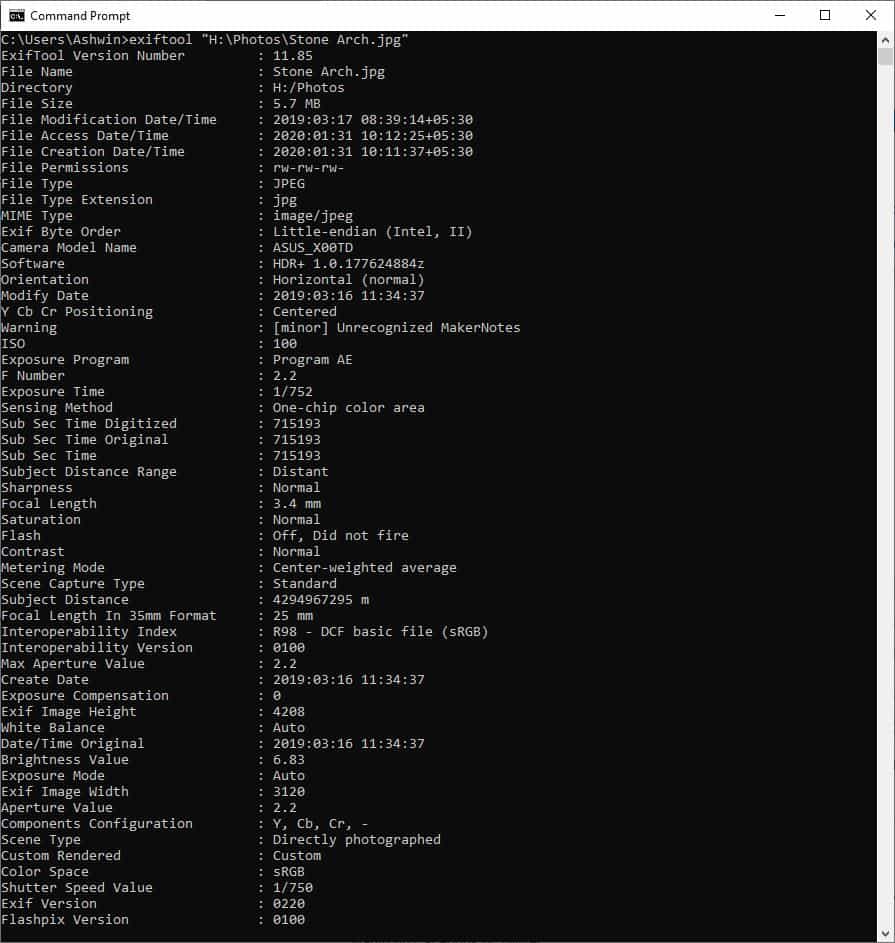

#Exiftool commands pdf#
Unless you want to strip off the metadata from images or documents for your privacy, there are various tools that allow you to selectively edit the metadata in digital photos or PDF documents. PDF documents also have its own set of metadata associated with them to identify author, title, date, etc. The metadata is automatically written by digital cameras, or manually added by photographers or photo editing software, to show various properties (e.g., creator, camera info, location) of a particular picture. Typical digital images or photos have a rich set of metadata embedded in them. Keep in mind that the bold and italic styling is merely for illustration here, and will not show up or be needed in Terminal or Command Prompt.How to view or edit PDF/image metadata from command line on Linux If any of the text not shown as bold or italic is changed, the command will not work as expected, so use caution to avoid unintentional changes. Of note, metadata fields can vary between file types, so if you use this command for anything besides tif or jpeg, you may need to customize the text shown in italics.
#Exiftool commands Pc#
PC directions should be similar, but I have not personally tested on that platform. If you copy-paste everything through the end of ".txt" you can simply insert a space, then drag and drop the folder you want from Finder into the Terminal window and it will auto-populate the file path. Copy paste the command, with any BOLD text switched to meet your needs. To use the command above in a Mac where ExifTool has been installed, open terminal and navigate to the directory where you want the. The file name and directory ensure I know where to find any problematic files. By using a filter to check the file size, I can quickly see whether any values are surprisingly small or null, which can indicate a corrupt file. The metadata fields I selected above allow me to quickly use filter tools to check whether there are any variations in resolution, bit depth, and color profile settings to ensure they are correct.

This text file will be written to whatever directory the command is run from. The information in several metadata fields (specified here in italics) will be pulled for each file it finds and written to a single tab-delimited text file that can then be opened and investigated in a spreadsheet program, such as Excel. This command will carry out what is called a recursive action, where I can point it to a top level folder with many subfolders and it will automatically search all subfolders for the type of file I've specified (tif, in the example). The creator of ExifTool is active on the forum, and helped me troubleshoot the creation of my favorite command:Įxiftool -T -r -ext tif -FileName -XResolution -BitsPerSample -FileSize -ProfileDescription -Directory -w+ %0f. The Forum is a good place to go for help, as others will be quick to help you write a command if you get lost on the documentation. However, with basic command line familiarity, having an array of pre-set commands to copy-paste into Terminal or Command Prompt will be all you need to work with ExifTool.
#Exiftool commands full#
The documentation can also be frustrating, as it is dense, not always organized in the best way, and full of jargon. ExifTool is lightweight and powerful, but unfortunately not very intuitive.


 0 kommentar(er)
0 kommentar(er)
